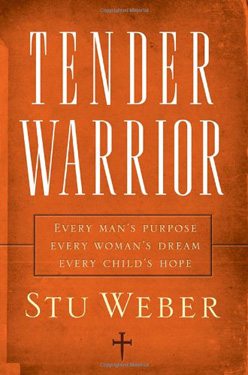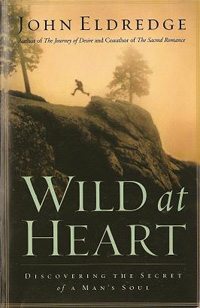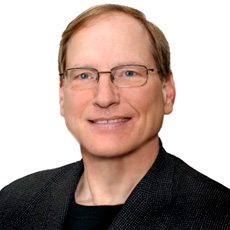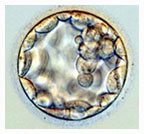Dr. Bohlin looks at two attempts to define the characteristics of a godly man according to a Scriptural, biblical worldview perspective. These characteristics give a Christian man a way to evaluate his walk with God and how it communicates Christ to others.
The Four Pillars of a Man’s Heart
Manhood continues to be in crisis. For many men today, their physical strength is rarely necessary. Technology and urban isolation have ripped up the landscape that men inhabit to such a degree that many men are wandering around wondering who they are and what they’re here for. The extreme women’s movement proclaims that a woman needs a man like a fish needs a bicycle.
 Over the last fifteen years numerous books have been written from both secular and Christian authors to help men find their way. In this article we’re going to spend some time with two of them. Stu Weber, a pastor in Oregon wrote the hugely influential Tender Warrior in 1993. Tender Warrior is full of stories and illustrations that irresistibly pull you along to Stu’s appointed end: a vision of manhood mined from God’s original intention for a man wrapped up in the New Testament vision of the Ultimate Tender Warrior, Jesus Christ.
Over the last fifteen years numerous books have been written from both secular and Christian authors to help men find their way. In this article we’re going to spend some time with two of them. Stu Weber, a pastor in Oregon wrote the hugely influential Tender Warrior in 1993. Tender Warrior is full of stories and illustrations that irresistibly pull you along to Stu’s appointed end: a vision of manhood mined from God’s original intention for a man wrapped up in the New Testament vision of the Ultimate Tender Warrior, Jesus Christ.
At the core of Weber’s vision is what he calls the four pillars of a man’s heart: the Heart of a King, the Heart of a Warrior, the Heart of a Mentor, and the Heart of a Friend. I first read Tender Warrior in the mid 90s, and I was immediately caught up in his four-part description. I knew I didn’t exemplify all of these characteristics as Weber describes them, but I knew I wanted to.
The Heart of the King reflects a man’s provisionary heart. The part of a man that wants to offer order, mercy and justice to the world he inhabits. Think of some of the Old Testament patriarchs, people like Abraham, Moses, and David. All of these men had a sense about them that drew others to them. They were leaders; they looked ahead and prepared those around them for what was coming.
The Heart of a Warrior portrays that part of a man that wants to shield, guard, defend and protect those around him. We intuitively understand this about men, but so many are inhibited from expressing this today. Movies and the entertainment industry often portray this aspect of manhood in its harsher tones. Consequently, this true aspect of manhood is more a target for suppression than for understanding.
The Heart of a Mentor reflects that part of a man that desires to model, train, and explain. Little boys particularly expect their dads to know everything. And a dad puffs up every time he can answer his son’s questions. This aspect particularly is missing today in the church as young men from broken and dysfunctional families flounder, looking for an older man to help point the way.
The Heart of a Friend describes the part of a man that is truly compassionate, loving, and committed. The apostle Paul was a tough character as expressed in the list of hardships in 2 Cor. 11:23-28, yet he talked to the Thessalonians with gentle and tender words in 1 Thess. 2:7-8.
“Sourced in Scripture, observed in history, and experienced personally, these four pillars bear the weight of authentic masculinity. They coexist. They overlap. And when they come together in a man, you will know it. You will feel it. You will be touched by it. Like four strands of a steel cable, they will hold you.”{1}
A Man and His Family
These four pillars encapsulate four essential qualities in a man of God: leadership, protectiveness, teaching, and compassion. A man with just three of the four is out of balance. A man who just emphasizes one of the four is a caricature of a real man. Nowhere is this more evident than in the biblical picture of headship and a man’s role in his family.
Our culture is horribly confused on this point. Weber sums it up neatly when he says, “Men, as husbands you have been given a trust, a stewardship, a responsibility, a duty, to husband, or manage, or care for the gifts of your wife.”{2} Part of my job as a husband is to create an environment in our home that allows my wife to be all God created her to be. She needs to be able to trust my leadership. She needs to know I will stand up for her and provide a secure environment. She needs to be comfortable in seeking my guidance and instruction. Finally, she needs to know that she is loved with a Christ-like self -sacrificing love. Weber adds, “A woman was made to be provided for, protected, and cared for. A man was made to be a provider, protector, and caregiver. Nothing is more pitiful than a man forfeiting his masculinity or a woman her femininity by transgressing the created order.”{3}
Weber’s discussion of a man and his lady provides numerous helpful insights, exercises, and illustrations on how a man is to love a woman. One commentator suggested that the chapter titled, “Does Anyone Here Speak Woman?” is worth the price of the book alone. Weber encourages men to realize that since men and women are inherently different, a man needs to learn a woman’s language, to live with her in an understanding way as Peter commands (1 Pet. 3:7). We need to put our analytical minds to work to understand how she is put together. We won’t ever get all the way there, but after all, a little mystery is what keeps marriage exciting, fresh, and interesting anyway.
Weber devotes three chapters to the incredible power of fathering. Our culture today is in dire need of real men willing to father their children. So many dads are absent either physically or emotionally. This alone accounts for so many wayward kids, both male and female alike. A father has a powerful multigenerational impact on his sons and daughters whether intentional or not. It’s the nature of God’s design.
Like arrows in a quiver, each child needs to be constructed, aimed, and released according to the bent God has given them. Skillful parenting does not come naturally, especially in our culture today that is so confused and off course. It will require biblical and rational thinking in advance.
A Man and His Friends
In his book, Tender Warrior, Stu Weber titles the first chapter about a man and his friends, “Real Men Stand Together.” In our increasingly mobile and fragmented society, it’s harder than ever for men to know each other well enough to be willing to stand together. Upon hearing that Jonathan was dead, the future King David commented that Jonathan’s love was wonderful, more wonderful than that of a woman (2 Sam. 1:26).
Men who have weathered tough times together, even fought together, develop a bond that can be stronger than that between a man and a woman. But how many men have such a friendship? There are numerous forces in our culture that leave most men isolated and cut-off. We see the lonely male model in the movies all the time. Characters played by John Wayne, Bruce Willis, Sylvester Stallone, and Arnold Schwarzenegger tend to be the isolated lonely male types: able, or perhaps, forced to handle life’s pressures on their own.
Neighborhoods rarely have block parties today. We live in our closed up homes (no open windows in summer or people out on the porch on summer evenings) with tall fences keeping things private. We drive our own cars to work, work long hours, and relax in front of the TV or a book isolated from those around us. A sense of community has been lost in our cities and even small towns. Men, therefore, have no one to connect with outside of office mates or sports teammates. We think we do just fine on our own, thank you.
However, as we grow older, we hunger for someone of the male species to truly share what we are experiencing. But there is no Jonathan or David, someone I fought with in the trenches, someone who really knows me and my successes and struggles.
Men long for someone to lock arms with in a struggle greater than themselves. Looking again at David and Jonathan, we learn in 1 Samuel 14 that Jonathan was a warrior just like David, and when David slew Goliath (1 Samuel 18), Jonathan immediately made a connection. They had shared values. They became one in spirit. Jonathan made a covenant with David that basically said what’s mine is yours. They developed an unselfish love for each other. Jonathan exhibited a deep loyalty to David when he intervened on his behalf when his father, King Saul, sought David’s life.
In 1 Samuel 20, David and Jonathan expect that they may never see each other again and weep in each other’s embrace. They were transparent. They weren’t afraid to be emotional in the other’s presence. Do you have a friend like that? I encourage you to seek a friend who shares your values, and work to develop an unselfish, loyal, and transparent relationship that the Lord will use to guide you through today’s muddy waters.
Battle to Fight, an Adventure to Live, and a Beauty to Rescue
 In the continuing parade of books from Christian authors for men comes a book that has taken the evangelical community by storm. Counselor and writer John Eldredge claims that men are wild at heart and desperately need to recapture this essential part of maleness. In his book, Wild at Heart, Eldredge claims that every man needs a battle to fight, an adventure to live, and a beauty to rescue.
In the continuing parade of books from Christian authors for men comes a book that has taken the evangelical community by storm. Counselor and writer John Eldredge claims that men are wild at heart and desperately need to recapture this essential part of maleness. In his book, Wild at Heart, Eldredge claims that every man needs a battle to fight, an adventure to live, and a beauty to rescue.
Eldredge’s triumvirate lines up quite well with Weber’s four pillars, the Heart of the King, Warrior, Mentor, and Friend. Both Weber and Eldredge assert that a man needs a cause outside himself to fully live out the image of God in him. They just use different terminology.
However, Wild at Heart sometimes leaves you a little too wild. Yes, men need to be free to explore that wild side, but responsibility is not just a duty that shackles a man’s God-given wildness. Eldredge can sometimes run roughshod over the state of men in the church and seems to encourage men to be little boys rather than grown men with both needs and responsibilities.
For instance, Eldredge uses many illustrations from physically demanding backcountry experiences to highlight his call to be wild at heart. Early in the book he retells how he and his sons faced the flooded, muddy, and debris-filled Snake River with nothing but a canoe. He says, “I have never floated the Snake in a canoe, nor any other river for that matter, but what the heck. We jumped in and headed off into the unknown, like Livingstone plunging into the interior of dark Africa.”{4} Wild? Sure, but reckless and irresponsible, too!
But despite the occasional excess, Eldredge uncovers that same need for a cause outside himself, and identifies it as a battle to fight, an adventure to live, and a beauty to rescue.
Eldredge proclaims that there is something fierce inside every man, whether it is slaying the dragons of business or whacking a little white ball on a golf course. Men naturally compete. If there is no winner, we quickly get bored.
The adventurous spirit is not just about having fun. Adventure requires something of a man. Deep down inside we wonder if we have what it takes, whatever the task that presents itself. Most men watch war movies wondering how they would have responded if presented with the same situation.
But there’s more. Men need someone to fight for and with. A companion. A beauty. A helpmate. Adam had a great and wonderful world to explore at his creation. But God recognized that he needed something else, a helpmate suitable for him.
In summary then, at the heart of every man there is something fierce, wild, and passionate. But all this can only be properly harnessed as we seek a relationship with the Ultimate Tender Warrior, Jesus Christ. But in a fallen world, we are all walking wounded. If that is the case, does Eldredge have a recipe for healing?
Healing the Wound
John Eldredge likens many men to a huge male lion in his local zoo. The lion, as powerful and ferocious as he is, is caged in a small cell where he lies around, bored except at feeding time, and is but a shadow of what he was created to be. In a fallen world, where our enemy prowls around looking for someone to devour, most if not all men have been wounded at the heart of their masculinity. It has sapped their strength and put them on the sidelines.
Most often this wound comes from someone close to us, either a parent (usually the father), sibling, relative or peer. Most of us can remember someone telling us, either by words or actions, that we don’t have what it takes to be a man. This can often be due to a series of events over an extensive period of time rather than to a single event. As a result, we go through life wondering if we have what it takes.
In today’s culture, this wound can come from a school system that is telling our boys that there is something wrong with them. Boys are far more likely to be medicated than girls, and often it is only for just being boys. And with so many fatherless homes due to either physical absence or an extremely passive father who never gets involved, nobody is showing boys and young men what it means to be a man.
So men will often try to answer their question, to heal their wound, by going to some very unwise places. Some rebel, others try to earn their father’s respect by becoming driven overachievers. Others retreat into passivity or are haunted by pornography or even drugs. Some search for their masculinity from women or maybe just one woman. But femininity can never bestow masculinity.
There ends up being a false self we create to distance ourselves from the question we fear, that gives others the impression we have it all figured out, when deep inside everything is mush. The answer lies in going to the One who created us for a very specific purpose and indeed knows who we are (Psalm 139). Jesus never shied away from acknowledging that He was totally dependent on the Father. Many times He said things like, “I and the Father are one.” Or “I do nothing apart from the Father.”
We have been created to be dependent on God, yet we as men continually try to convince ourselves we can do it on our own. In order to bring us to a point of recognizing our daily need to walk with Him, the Lord will bring us through trials that force us to depend on Him. The false self is stripped away until there is nothing left for us to do. Here and only here can the wound be healed. The Lord will walk us through an intensely personal awakening to reveal whom He created us to be if we will only trust Him.
So when troubles arise, instead of whining or complaining, we should ask, What is it the Lord wants me to see? What is He trying to teach me? What do I need to learn? Then we will be on the road to true masculinity.{5}
Notes
1. Stu Weber, Tender Warrior (Sisters, Ore.: Multnomah Books, 1993), p. 43.
2. Ibid., p. 92.
3. Ibid., p. 92.
4. John Eldredge, Wild at Heart (Nashville: Thomas Nelson, 2001), p. 5.
5. This last section summarizes chapters 3-7, which are the heart of Eldredge’s
book, Wild at Heart. When reading Wild at Heart, one needs to be aware that Eldredge’s
language is sometimes imprecise and can leave the wrong impression. I’m convinced that Eldredge
sees that the real battle we all must face is with spiritual forces, and that our physical
tests of strength are only rehearsals for the real thing. But his book can be misinterpreted as
an excuse for men to overindulge in risky behavior and some men to take dangerous risks they
are not prepared for. For some, Wild at Heart can only serve as an appeal to the flesh.
So, is the tender warrior wild at heart? Yes, but not to the degree some choose to believe.
Eldredge uses a great illustration on page 83. “Yes, a man is a dangerous thing. So is a
scalpel. It can wound or it can save your life. You don’t make it safe by making it dull; you
put it in the hands of someone who knows what he’s doing.” Only the Ultimate Tender Warrior, Jesus
Christ qualifies.
©2003 Probe Ministries

 Part of the struggle in the stem cell debate is the definition of terms. The media regularly uses the term embryo to refer to what is necessarily destroyed to obtain embryonic stem cells. The more specific term is blastocyst. The blastocyst (see picture) forms after about 5-7 days following fertilization and ends at about 14 days when further differentiation begins.
Part of the struggle in the stem cell debate is the definition of terms. The media regularly uses the term embryo to refer to what is necessarily destroyed to obtain embryonic stem cells. The more specific term is blastocyst. The blastocyst (see picture) forms after about 5-7 days following fertilization and ends at about 14 days when further differentiation begins.
